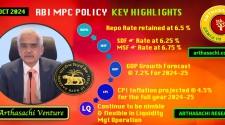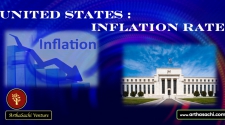
Global Investors have watched from sideline the wild gyrations of Gilts & British political fiasco
UK Financial markets have seen some of the most violent moves in the last few weeks specially in the Gilt Market particularly at the long end of the Government debt market.
It raised an alarm bell across the Global Markets and has put the spotlight back to UK on flaws in the strategy and structure of one important part of a lot of pension funds. The Bank of England has had to deal with a threat to the stability of the financial system.
Bank of England policymaker Catherine Mann’s comment is quite important in view of wild gyrations of Gilts in the Treasury Market, “Bond purchases by the central bank in the days after the government’s mini-budget fiscal plan last month to calm financial markets were very targeted and temporary.” He also added, “The financial stability approach, the requirements for financial stability was very targeted and temporary.” Mann was at an event organized by the Marshall Society at Cambridge University.
UK Economy
The UK economy has been buffeted by very large disturbances in the last two and half years. Some of the most challenging one’s are Covid, political instability, post Brexit challenges, a shrinkage of the labour forces, conflict in Europe between Russia and Ukraine, energy crises and higher commodities prices.
The UK Prime Minister Liz Truss stepped down after just six weeks in office, who is the shortest serving prime mister in British history. Liz Truss has promised to end the economic policy “orthodoxy” by cutting taxes in an attempt kick-start growth, adding to the British economy already high debt levels. Government was brought down by an economic programme which sent a shockwave through the market and divided her own Conservative party. Truss in her resignation speech said, “She realized she could no longer deliver on the promises that won her the Conservative Leadership.” A new leadership election will be completed by October 28. Conservative party hold the mandate for another two years. Political uncertainty at such juncture will cause more harm to UK economy. Investors are grappling with a cauldron of risks.
Moody’s cuts UK outlook from “Stable” to “Negative” and affirms Aa3 ratings. The change in outlook to negative from stable is driven by, heightened unpredictability in policymaking amid weaker growth prospects and high inflation; and Risks to the UK's debt affordability from likely higher borrowing and risk of a sustained weakening in policy credibility. The economic outlook has worsened as high inflation, weaker external demand, and the rising cost of borrowing; exacerbated by volatile financial market conditions in the aftermath of the government. Real GDP growth has been slowing since the beginning of 2022 and will continue to soften in the coming quarters, with Moody’s forecasting growth will average just 0.3% over 2023-24 and not return to its potential level of 1.5% until 2026. Brexit will continue to weigh on trade, investment and the labour market, reducing long term productivity by around 4%.
The evolution of policymaking, and the UK government's ability to engender confidence in its commitment to fiscal prudence, will be a material consideration for Moody's in resolving the negative outlook. An outlook period typically lasts 12-18 months.
The UK Central Bank, Bank of England hikes another 50 Basis points base rate to 2.25% on its last Monetary policy meeting and Government’s biggest tax cuts since 1972 triggered financial chaos in the UK Market. Britain’s central bank in the last few weeks had to step in to try and quell a fire-storm in the bond markets which marked a plummet in sterling. UK Treasury’s 30 Year Bond recoded a 270 Basis points movement on either side between 22nd to 28th Sep 2022. Bond movement has gone in the history book as this level of volatility has never been seen in the past.
The UK Inflation moved to double digits to touch 10.1% CPI in July month. Higher energy prices is the main reason why inflation is currently so high. Other three factors which are adding to the higher inflation: first one is pressure on prices from development in the UK, secondly businesses are charging more for their goods and services due to raise in their operating costs and lastly there are more demand for jobs, as fewer people are seeking work post pandemic. Employers require to shell more wages to attract job applicants. The Bank of England sets the Inflation target at 2% which is way above the current level.
The UK Treasury’s 10 Year Bond closed this week at 4.08% with a weekly gain of 26 Basis Points. UK is fighting a higher Inflation; current Inflation rate is 9.9% with the target to keep it at 2%.
Top News
Other News
MARKETS
WEALTH
ECONOMICS
START UP
TECHNOLOGY
BUSINESS
Alliances and Partners

Arthasachi Venture Footprints


















